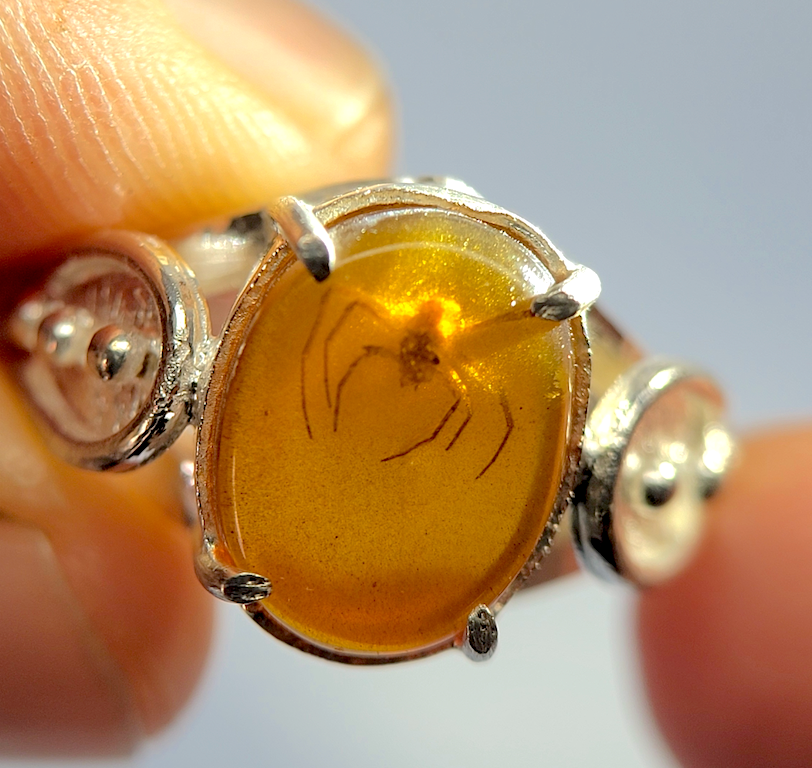Amber Encyclopedia Entry#9:Fossilized Spider in Burmese Amber – Preserved in a Silver Ring
- Ryan Zschomler
- Jul 18
- 2 min read
This museum-grade silver ring contains a fossilized spider preserved in Burmese amber for 99 million years. Learn about the rarity of spider inclusions, their scientific importance, and how this fossil became a wearable piece of deep-time history.
Amber has long been celebrated for preserving the smallest traces of ancient life — insects, flowers, feathers. But some inclusions strike a balance between beauty and evolutionary history. This Burmese amber silver ring features a fossilized spider, preserved since the Cretaceous period, approximately 99 million years ago.
Now set in a handcrafted sterling silver ring, this specimen represents both a scientific wonder and a wearable fossil from the time of the dinosaurs.
Why Are Spider Fossils in Amber So Significant?
Spiders are soft-bodied and fragile, making them difficult to preserve in traditional rock fossils. Amber provides a rare exception — trapping spiders mid-movement, sometimes even in hunting poses or web structures.
This specimen includes:
A complete or nearly complete spider body
Legs fully extended or curled in natural resting posture
Fine details visible under magnification, including segmentation and eye arrangement
Such preservation gives researchers insight into arachnid evolution, behavior, and ancient ecosystems.

Inclusion: Fossilized spider
Preservation: Full body with visible legs and internal contrast
Amber Type: Burmese amber (mid-Cretaceous)
Geological Age: ~99 million years
Locality: Hukawng Valley, Kachin State, Myanmar
Scientific Insight: Spider fossils help document the biodiversity of Cretaceous rainforests and may show early traits in modern arachnid lineages
Where to Find Fossils Like This
To explore authentic Burmese amber fossils — including insects, enhydros, leaves, and rare spiders — visit:



Comments